If your Windows laptop shows a Blue Screen when unplugged, the solutions provided in this article will help you resolve this problem. This problem usually occurs due to a computer hardware fault, but it can also be associated with your laptop charger.
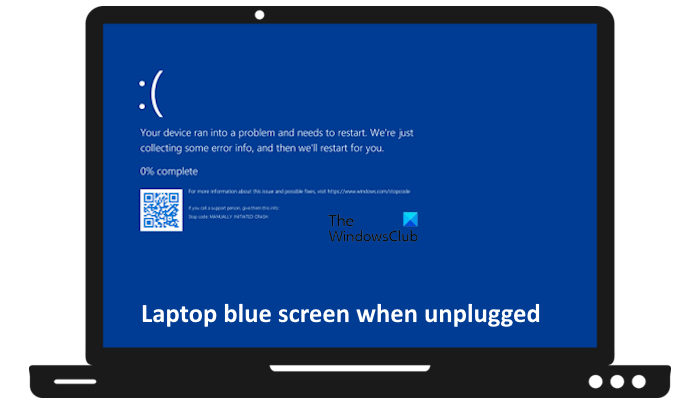
Laptop Blue Screen when unplugged in Windows 11
Use the following solutions if your Windows 11/10 laptop shows a blue screen when it is unplugged:
- Perform a hard reset
- Use another compatible charger
- Run a battery test
- Perform a hardware clean boot
- Run Power Troubleshooter
- Run Blue Screen Troubleshooter
- Update Battery driver
- Change your power plan
- Update BIOS
Below, we have explained all these fixes in detail.
1] Perform a hard reset
The first step is to perform a hard reset. The problem you are facing might be appearing due to the residual charge in capacitors. Use the following steps to perform this action:
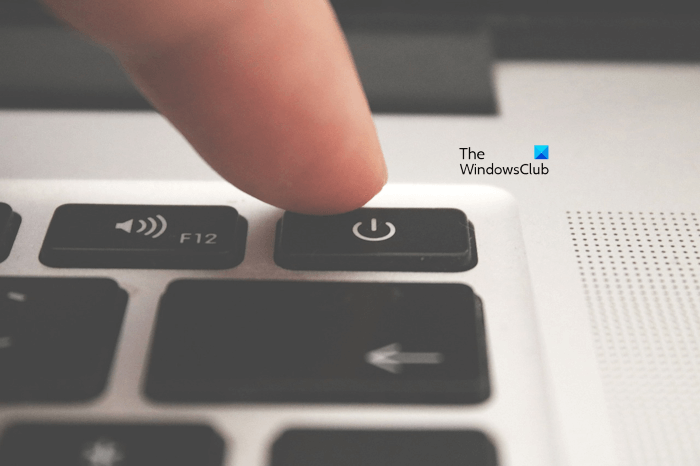
- Completely turn off your laptop and disconnect all peripherals and the charger.
- Remove the battery. Skip this step if your laptop has a non-removable battery.
- Press and hold the power button for up to 45 seconds.
- Insert the battery and turn on your laptop.
Now, check if the problem persists.
2] Use another compatible charger
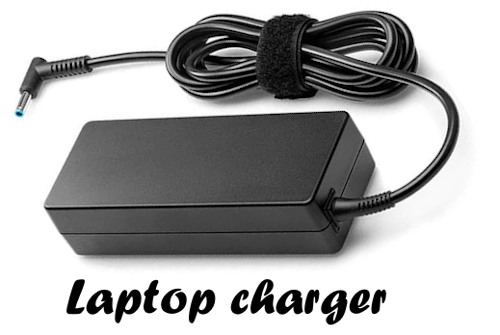
Are you using a compatible charger to charge your laptop battery? If yes, the problem might be with your laptop charger. To check this, connect another compatible charger with your laptop and see what happens now.
3] Run a battery test
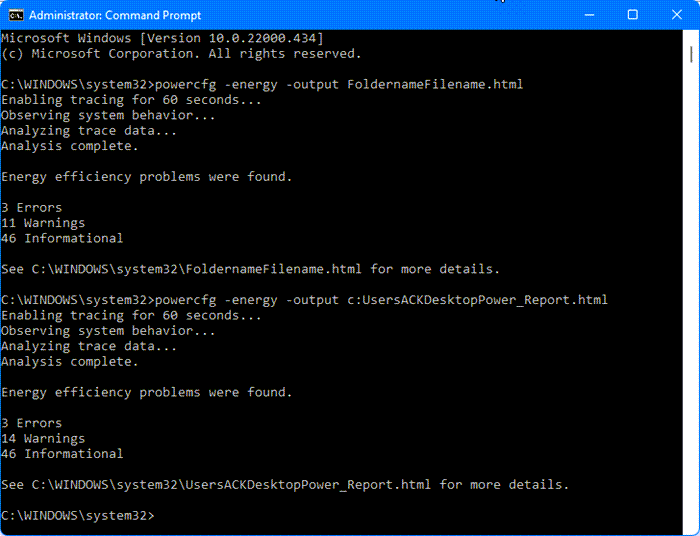
It is possible that your laptop battery is faulty. To check this, you can run a battery test. Windows 11 has a built-in tool, known as the Power Efficiency Diagnostic Report Tool. This is a command-line utility that generates the battery health report of your laptop.
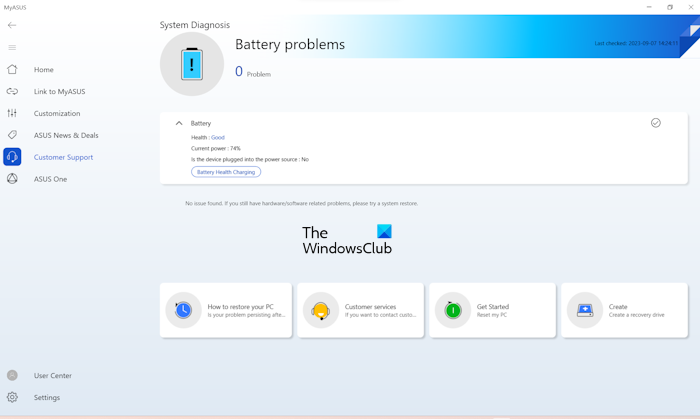
Alternatively, you can also use free battery health-checking software – or, you can also use the software developed by your computer manufacturer, such as HP Support Assistant, MyASUS app, etc. These tools will also help you run a battery health checkup test and generate the report for the same.
4] Perform a hardware clean boot
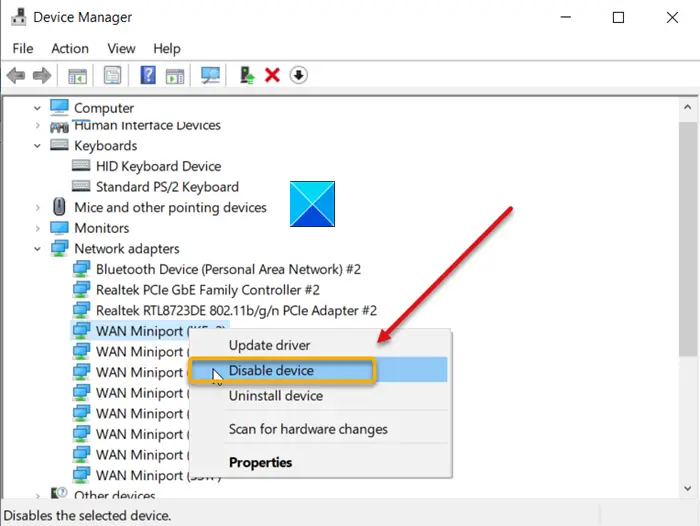
The Hardware Clean Boot allows you to identify the hardware responsible for the problem you are experiencing on your system. We suggest you perform a hardware clean boot and see if this helps.
In this process, you have to disable the drivers of some specific hardware one by one. When the problem disappears after disabling a specific driver, the hardware to which that driver belongs is causing this problem. Now, you can reinstall that driver to see if this helps.
5] Run Power Troubleshooter
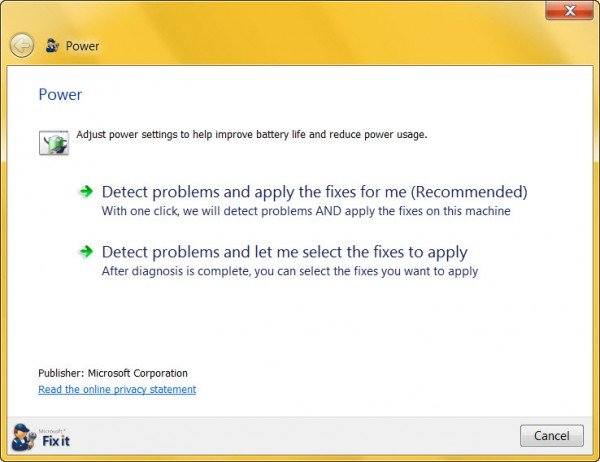
The next step is to run the power troubleshooter and see if it helps. It is an automated tool that helps fix power-related issues on a Windows computer. We suggest you run this tool and see if it helps.
6] Run Blue Screen Troubleshooter
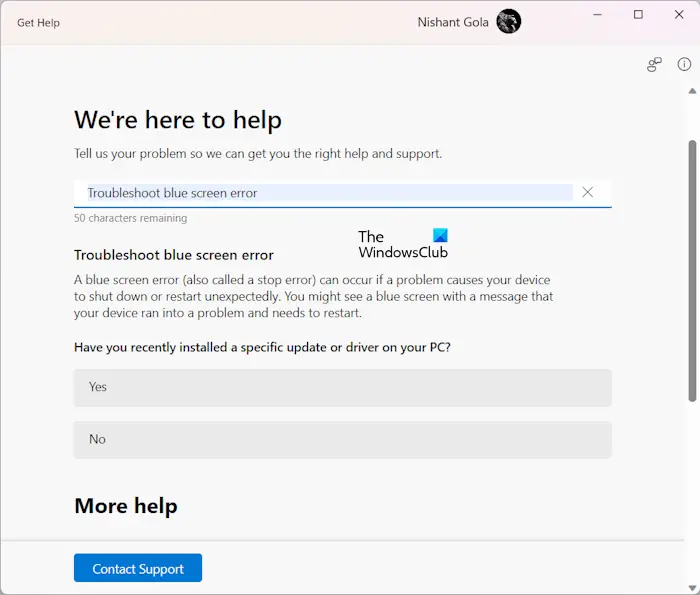
Run the Blue Screen Troubleshooter and see if that helps you fix the issue.
7] Update Battery driver
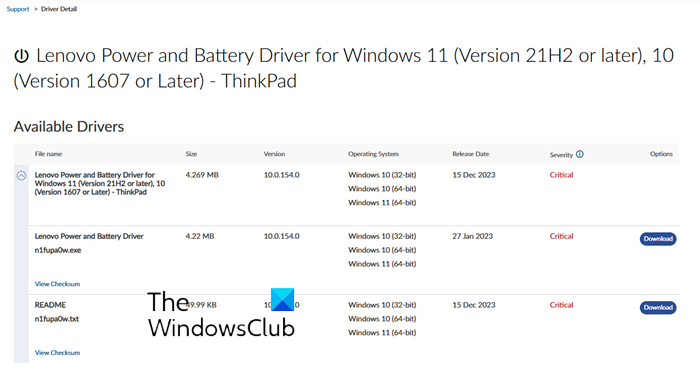
Update the Battery driver and see if that helps. You can download the Battery driver from the official manufacturer’s website and install it.
8] Change your power plan
The problem might be caused by the power plan currently activated on your system. You can check this by switching to another power plan. You can do this via the Control Panel. Open the Control Panel, type Power in its search box, and select Power Options from the search results. Now, you can easily change your power plan.

Some Windows computers have only the Balanced power plan in the Control Panel. If you see this, you can restore the missing default power plans by running the required commands in the administrator Command Prompt window. However, if the Modern Standby S0 Mode is activated on your system, these commands will not work. In this case, you have to disable this mode. After that, the commands should work.
9] Update BIOS
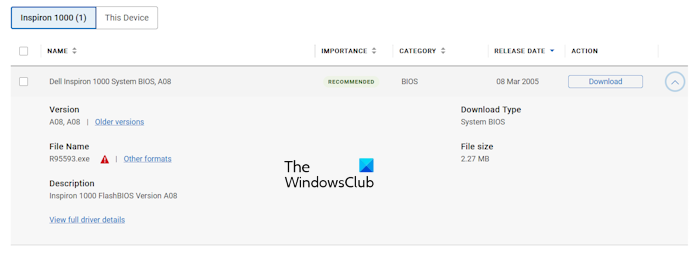
An outdated version of the computer BIOS can also cause several issues. We suggest you check for a BIOS update. If an updated version of your system BIOS is available, install it. You can download the latest BIOS version from your computer manufacturer’s official website.
Do note that you need to provide a continuous power supply to your laptop while updating BIOS, even if your laptop battery is completely charged. An unexpected shutdown of a computer during the BIOS update can break the motherboard.
How to know if RAM is damaged?
A faulty RAM shows various signs. If you note these signs on your system, your RAM might be faulty. However, other hardware issues can also show the same signs or symptoms. Some of these signs include decreasing system performance, random restarts or shutdowns, frequent Blue Screen errors, etc. Additionally, your system can also start showing incorrect RAM in this case.
Can a PC run without RAM?
No, a PC cannot run without RAM. RAM is an essential hardware component of a computer. RAM stands for Random Access Memory. Its function is to store data temporarily, including the calculations performed by the CPU. Moreover, the programs that run on a computer also store temporary data in RAM. If RAM is not available on a computer, it will not boot. You may also hear some beep sounds indicating a hardware error.
Read next: Laptop battery suddenly drops to 0%.